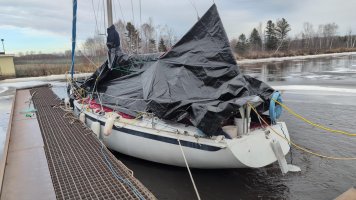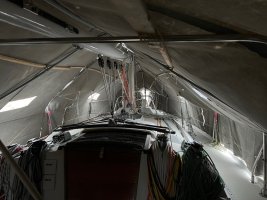Hello everyone,
My name is Johnny, and I’m new to the forum. I’m currently testing out winter long-term cruising and experimenting with my setup. To manage the colder months, I’ve been using sump pumps as bubblers to prevent ice buildup, sleeping bags laid over the deck for insulation, and 12-mil tarps for extra protection.
I’m excited to be here and looking forward to connecting with fellow enthusiasts. If you have tips for winter cruising or innovative ways to stay warm and protect your boat in freezing conditions, I’d love to hear them!

~Johnny
35-2
"Fuzzy Logic"
Duluth MN
My name is Johnny, and I’m new to the forum. I’m currently testing out winter long-term cruising and experimenting with my setup. To manage the colder months, I’ve been using sump pumps as bubblers to prevent ice buildup, sleeping bags laid over the deck for insulation, and 12-mil tarps for extra protection.
I’m excited to be here and looking forward to connecting with fellow enthusiasts. If you have tips for winter cruising or innovative ways to stay warm and protect your boat in freezing conditions, I’d love to hear them!

~Johnny
35-2
"Fuzzy Logic"
Duluth MN

